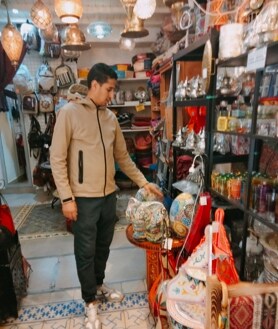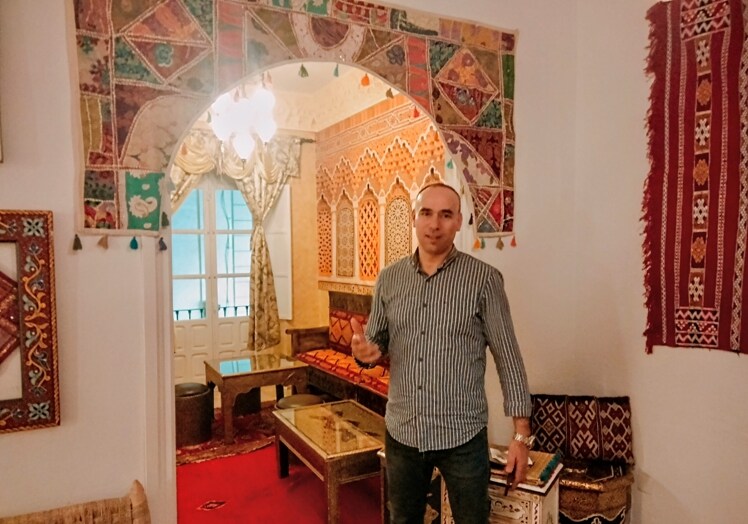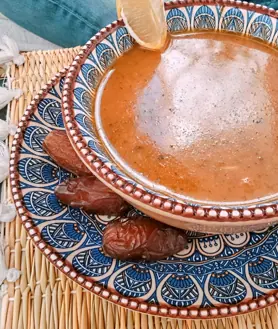The end of Ramadan: the essence of Morocco in Nerja
The Costa del Sol's easternmost town has a significant Muslim community; the majority are Moroccans who create a special atmosphere, thanks to shops, cafes and restaurants
Alekk M. Saanders
Viernes, 21 de abril 2023, 15:05
This weekend the Muslim community around the world is celebrating the end of Ramadan, a month of fasting. The traditional greeting 'Ramadan Kareem', which in Arabic translates into 'Have a generous Ramadan', has been heard in many countries over the last few weeks, including the south of Spain, which, unsurprisingly has a significant Muslim population, given the proximity of Morocco.
In Nerja, the essence of that country just across the Strait lies in the range of Moroccan shops, cafes and restaurants which are a stone's throw from the town centre.



Like a trip through the country
Every day you can plunge into the charming atmosphere of Morocco in Nerja if you drop in one of the largest shops in the centre of the town.
Entering 'Riyad' is like setting foot in a fairy-tale, for example, One Thousand and One Nights. Mosaic lanterns and individually hand-blown glassware are ablaze with different colours. Brass copper vintage Aladdin genie oil magic lamps shine from the shelves as well.
When you touch them, he appears... not Aladdinn but Said, the shop-assistant. The display of goods around the shop makes it look like an excursion through Morocco - from north to south.
“Lots of foreigners drop in our shop looking for unique and exotic home decor. And they always find something. I think Moroccan-inspired items can add a touch of global flair to any space. There are works from industrial producers but most of the pieces here are unique and handmade - from exclusive pottery from Sahara to wool-woven textiles from the Atlas Mountains.
"One of the oldest cities in Morocco, Safi (also Safim, Zaffim or Asfi), is represented with its pottery. Algerian potter Boujemâa Lamali established a pottery school in Safi, supported by the colonial administration. Since then, pottery has been a mainstay of Safi's economy. There are a couple of thousand registered artisans working in nearly 200 workshops. Additionally, thousands remain as unregistered artisans. Look, this plate has a signature and the name of a potter,” Said told SUR in English.



Plates made from Atlas stones are monocoloured, and their colours are very soft, and definitely might 'satisfy' any Northern European taste. However, the lamps are intricate and very bright-coloured. Some of them are actually called Turkish though became a part of typical Moroccan interiors.
Scents and sounds are also in the air in the shop. Moroccan mosaic water fountains create peace and calm through their 'whispering'. They are usually placed in a patio of a typical two-storey house called a 'riad'.
Said explained that the name of the shop makes people think about Saudi Arabia and its capital Riyadh though indeed it is a name for a typical home in Morocco where different generations of the family live together.
"Riads were once the estates of the wealthiest citizens, merchants, and courtiers in Morocco. It is a building shaped like a rectangle with multiple storeys centred around an open-air courtyard with a fountain. Nowadays, riads are a part of travelling to Morocco, and no visit to the country is complete without staying in one,” Said said.
Leather
Calle El Barrio in Nerja is recognised for its strong smell. Here there is a leather bazaar offering a variety of goods. Most of them are quality products handmade by skilled artisans using traditional techniques.
The world-famous tanneries are located in Fez and Marrakesh. However, Tangier is also gaining more fame as a modern centre of leather goods that follows trends in fashion.

“Our leather selection includes leather poufs in different designs and motifs. We sell leather bags, travel bags, backpacks and wallets in different colours. We work collaboratively with artisans because the charm in these rightly imperfect creations is still appreciated and wanted. At the same time, knowing the tastes of foreign guests of Nerja, we also have products, that are a sort of fusion between contemporary design and old tradition,” Karim, a shop assistant, told SUR in English.
Moroccan food
Moroccan cuisine is fuelled by interactions and exchanges among many cultures and nations over the centuries. Nerja recently gained a new restaurant with authentic Moroccan cuisine, located in Calle Pintada. The variety is impressive.



“Like Malaga, coastal Morocco has variety of sardine dishes. Herring-like European pilchard is mostly caught and especially loved. Other fish species include anchovy, mackerel, sardinella and horse mackerel. In cooler weather we offer hot soups. 'Harira' is a typical heavy soup, eaten during winter to warm up. It is usually served for dinner. 'Bissara' is a broad bean-based soup that is also consumed during the colder months of the year,” the owner, Karim Ibnoziri Madaya, told SUR in English.

Meanwhile, for delicious sweets and aromatic tea, people in Nerja head to Zaidin in Calle Granada. This Arabic style tearoom lures customers with the charm of its picturesque courtyard and cosy rooms.
A wide selection of teas, coffees and chocolates, including delicious sweets and homemade pastries, is provided in this emblematic 'tetería'.
